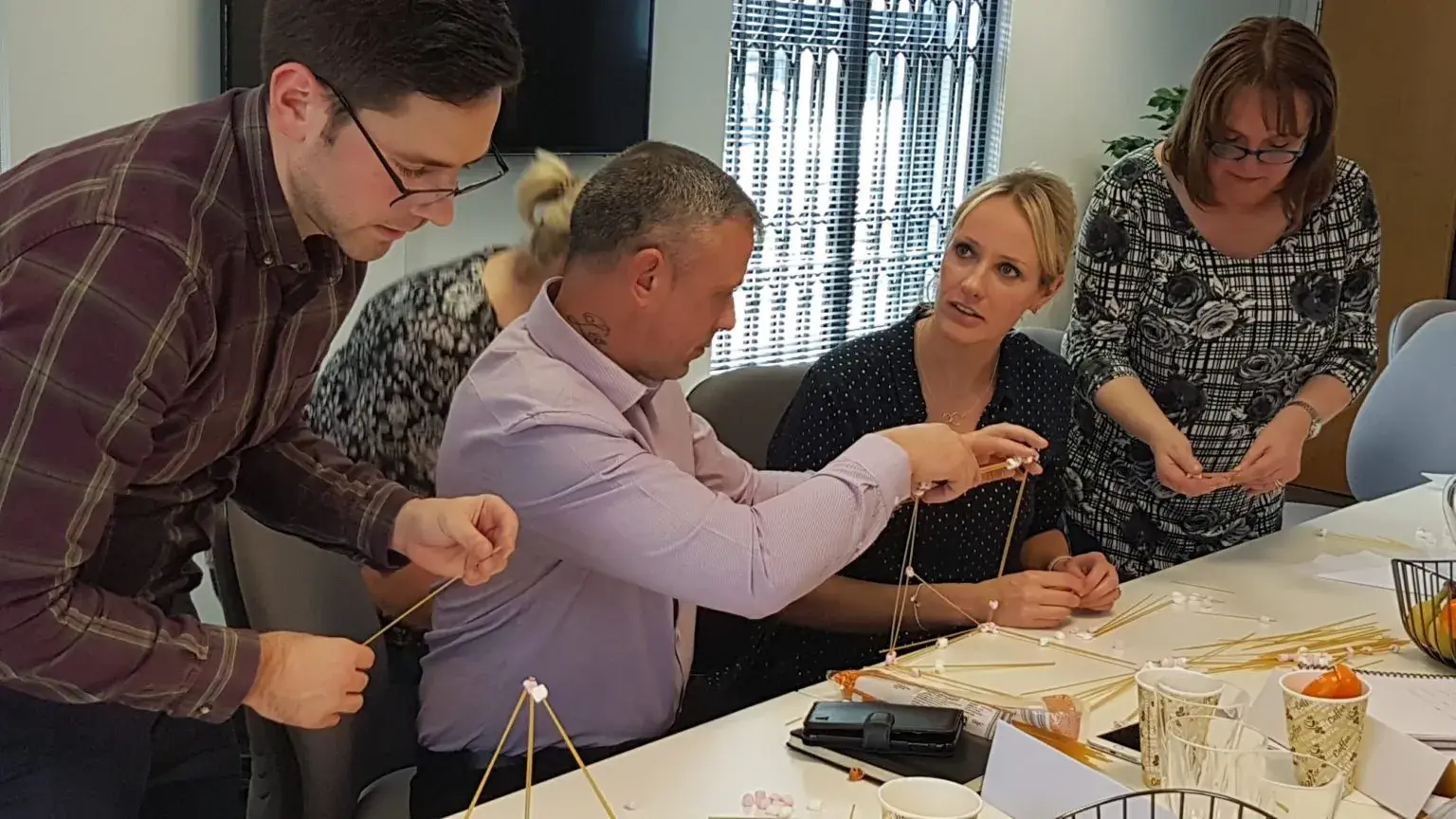Under-Performing Managers In Your Business? What Are The Signs & How to Address Gaps
By Lily Newman on Sep 24, 2025

Effective leadership acts as a bridge between ambitious strategy and operational execution, between aspirational culture and measurable behaviours. Yet many organisations only recognise weaknesses in their leadership capability once problems have firmly taken root, sending them scrambling into crisis management mode and expensive damage limitation exercises.
By then, the costs are substantial. Employee engagement and trust in leadership competency has eroded. Talent has walked out the door. Team performance has stagnated. And the gulf between where you are and where you need to be feels insurmountable.
The smarter approach? Identify management training needs before they metastasise into crises. Address potential issues with targeted interventions that prevent problems rather than merely reacting to them. Build more effective managerial structures that can support growth rather than inadvertently constraining it.
Not a small thing to get right, of course. But not impossible. If they’re identified and remedied before they have a chance to take hold. So, the real question isn't whether your organisation has leadership gaps. The question is whether you're spotting them early enough to do something meaningful about them.
Addressing The Management Skills Gap
Here's a diagnostic question worth asking: if some teams within your organisation perform consistently whilst others produce wildly uneven results, where does the problem actually lie?
The instinctive answer is often to blame the teams themselves. But more often than not, the real issue isn't with the people doing the work. It's with inconsistent management capability across the organisation.
High-performing teams benefit from managers who excel at delegation, who coach effectively, and who set clear, motivating goals. Teams that struggle often have managers who lack precisely those skills, potentially wasting significant talent and compromising engagement in ways that ripple throughout the organisation.
Training your team managers can provide much-needed consistency. When you equip all managers with an effective shared toolkit, you reduce the potential variance between teams dramatically. Performance differences then reflect genuine factors like team effort and market conditions rather than the managerial lottery of which leaders are competent and confident in their roles and which ones are not.
This levelling effect matters more than many organisations realise. When employees see that management quality varies wildly depending on which department they're in, it breeds resentment and undermines trust in leadership generally. Consistency signals fairness and professionalism.
Wars Of Attrition
Rising turnover rates and falling employee engagement scores are twin indicators that something fundamental has gone wrong. They're also two of the clearest signals of management shortcomings that organisations often misread or ignore until the damage becomes impossible to overlook.
The root causes are usually predictable: a lack of emotional intelligence, weaknesses in feedback delivery, poor goal-setting practices, inadequate investment in employee development, or clumsy conflict resolution that leaves resentment festering. These deficits erode trust and morale systematically, driving talented people towards the exit.
There's an old adage worth repeating here because it remains stubbornly true: Employees don't leave jobs. They leave managers.
Investing in managerial development fundamentally changes this equation. When you train managers in active listening, effective feedback delivery, and building operational resilience within their teams, you're not just ticking development boxes. You're building trust and understanding, whilst strengthening retention in ways that directly protect your bottom line by reducing recruitment costs and preventing the loss of institutional knowledge that walks out the door with every departure.
The financial case is compelling, but there's also a cultural dimension that matters just as much. Organisations that invest visibly in developing their managers send a powerful message: we value leadership quality, and we're willing to back that commitment with time and resources.
The Dangers Of Weak Leadership Pipelines
You wouldn't expect a leaky pipe to deliver stellar water pressure, so why would you expect a weak leadership pipeline to produce strong internal progression?
Yet that's precisely what many organisations hope for. When promotion opportunities are consistently filled from outside rather than from within, it signals that something has gone badly wrong with the internal investment in leadership skills. Without structured professional development programmes, talented employees plateau. They lose confidence in their ability to step up. Or they simply take their ambition elsewhere to organisations that invest in growing their people.
Structured training for team managers addresses this problem directly. Programmes focused on capability mapping, mentoring relationships, and clear progression planning don't just prepare people for new roles. They secure loyalty from ambitious employees who can see a viable path forward within the organisation rather than feeling they need to leave to advance their careers.
Building leaders internally isn't only cheaper than external hiring, it pays enormous dividends in employee engagement, cultural alignment, and institutional knowledge retention. Internal promotions signal to the workforce that growth is possible, that investment in development is genuine, and that the organisation values the people it already has.
Resistance To Change And Misaligned Behaviours
Resistance to operational change is another clear indicator that leadership intervention is overdue. When leaders lack adaptive skills, they don't just struggle personally. They spread uncertainty throughout their teams and inadvertently undermine the very workplace cultures that organisations’ spend years trying to build.
Similarly, when managers interpret their roles in wildly different ways from what senior leadership intended, or when they act in ways that, whilst well-meaning, are fundamentally misaligned with organisational values, the result is predictable: confusion, cultural drift, and a sense that nobody quite knows what the organisation stands for.
Targeted training equips leaders with the tools to guide their teams through change confidently and to embed consistent behaviours across the organisation. This consistency ensures that culture isn't lost in translation as businesses grow and evolve. Instead, it strengthens and deepens, becoming a genuine competitive advantage rather than corporate wallpaper that nobody takes seriously.
The alternative is fragmentation, where each pocket of the organisation develops its own microculture, its own interpretation of the company’s values, and its own approach to leadership. That path leads to inefficiency at best and cultural breakdown at worst.
Identify skill gaps and raise your leadership standards. Talk to Morgan James Consulting about assessing your current capability and designing training that delivers results.
Image source: Canva
- October 2025 (1)
- September 2025 (11)
- August 2025 (2)
- July 2025 (2)
- June 2025 (1)
- May 2025 (2)
- April 2025 (1)
- February 2025 (1)
- January 2025 (1)
- December 2024 (1)
- November 2024 (1)
- August 2024 (1)
- July 2024 (1)
- May 2024 (1)
- February 2024 (1)
- March 2023 (1)
- December 2022 (1)
- October 2022 (1)
- April 2022 (1)
- December 2021 (2)
- November 2021 (1)
- October 2021 (1)
- August 2021 (1)
- March 2021 (2)
- February 2021 (5)
- January 2021 (1)
- December 2020 (1)
- November 2020 (2)
- October 2020 (1)
- September 2020 (10)
- August 2020 (3)
- July 2020 (1)
- June 2020 (4)
- May 2020 (2)
- January 2020 (1)
- December 2019 (3)
Subscribe by email
You May Also Like
These Related Stories

Managing Conflicting Cultures During Company Mergers
On paper, mergers are elegant. Two organisations combine forces. Assets align. Synergies emerge. Market position strengt …

Making the Most of Our Talents and Understanding Difference
Overview Why do people do the things they do? Why can’t they see that the way I do things is better? How can I communica …

The Evolving Workforce: Leading Cultural Transformation In Diverse Teams
The workforce, much like the workplace, exists in a constant state of evolution. Its composition continuously shifts in …
%20(1).jpg?width=1258&height=206&name=Morgan%20James%20Master%20Logo%20file%20full%20colour%20(RGB)%20(1).jpg)




No Comments Yet
Let us know what you think